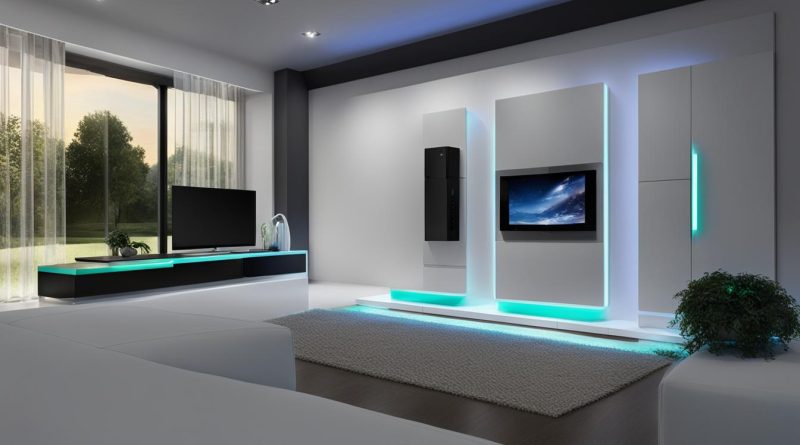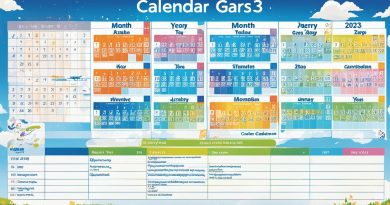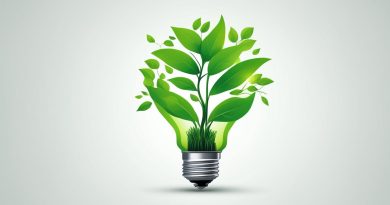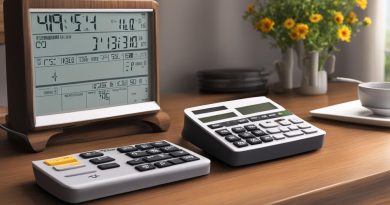Understanding Electricity: Usage & Efficiency Tips
Electricity is an essential part of modern life and powers most of the devices and technologies we rely on today, from smartphones to refrigerators to industrial machinery. It is a form of energy resulting from the movement of charged particles, such as electrons, through a conductor.
The power supply, transmitted through power lines or batteries, delivers electrical energy to our homes, workplaces and communities. Electrical energy is the amount of energy that an electric current can provide over time, usually measured in watts or kilowatts. Meanwhile, electrical power is the rate at which electrical energy is used or consumed, typically measured in watts or kilowatts per hour.
Despite its importance, electricity can also be costly and inefficient when not used wisely. This section provides an overview of electricity, focusing on its usage and efficiency. It discusses the basics of power supply, electrical energy, and electrical power, offering tips on how to use electricity more efficiently.
Key Takeaways:
- Electricity is a form of energy resulting from the movement of charged particles through a conductor.
- The power supply delivers electrical energy to our homes, workplaces and communities.
- Electrical energy is the amount of energy that an electric current can provide over time, while electrical power is the rate at which electrical energy is used or consumed.
- Efficient use of electricity is important to reduce costs and minimize environmental impact.
- Understanding the basics of power supply, electrical energy, and electrical power can help individuals use electricity more efficiently.
Power Supply and Electrical Circuits
Electricity is essential in our daily lives, and understanding the basics of power supply and electrical circuits can help us to appreciate its significance. Power supply refers to the process of generating electricity and delivering it to consumers’ homes and workplaces. Various sources are used to generate electrical power, including coal, nuclear, natural gas, and renewable sources such as solar, wind, and hydroelectric power.
Transmission and distribution systems are used to transport electrical power to end-users. Large transmission lines form the backbone of these systems, and smaller distribution lines carry power to homes and workplaces. When electricity reaches users, electrical circuits are used to facilitate its use. Electrical circuits are pathways through which electrical current can flow, consisting of wires, electrical components, and devices such as switches and fuses.
There are two main types of electrical circuits: series and parallel circuits. In a series circuit, electrical components are connected sequentially on a single path. The total resistance of the circuit is the sum of the resistances of its individual components. In a parallel circuit, electrical components are connected side by side, and the total resistance is lower than the smallest individual resistance.
Electrical circuits are commonplace in our daily lives. From the wiring in our homes and workplaces to the systems that power our electronic devices, they are integral to the functioning of our modern world.
The Components of Electrical Circuits
Electrical circuits are comprised of various components that perform specific functions.
| Component | Description |
|---|---|
| Power Source | Generates electrical power, such as a battery, generator or solar panel |
| Wires | Conductors that transmit electrical energy between components |
| Switches | Devices that can open or close a circuit to control the flow of electricity |
| Fuses | Devices that protect circuits from overloading and overheating by breaking the circuit when current is too high |
| Resistors | Components that resist the flow of electrical current and are used to control current, voltage, and power levels in circuits |
| Capacitors | Devices that store electrical charge and are used to smooth out voltage fluctuations in circuits |
| Inductors | Components that store energy in a magnetic field and are used in filters and transformers |
Understanding the components of electrical circuits and their functions can help in troubleshooting and repairing faulty circuits, as well as designing new circuits.
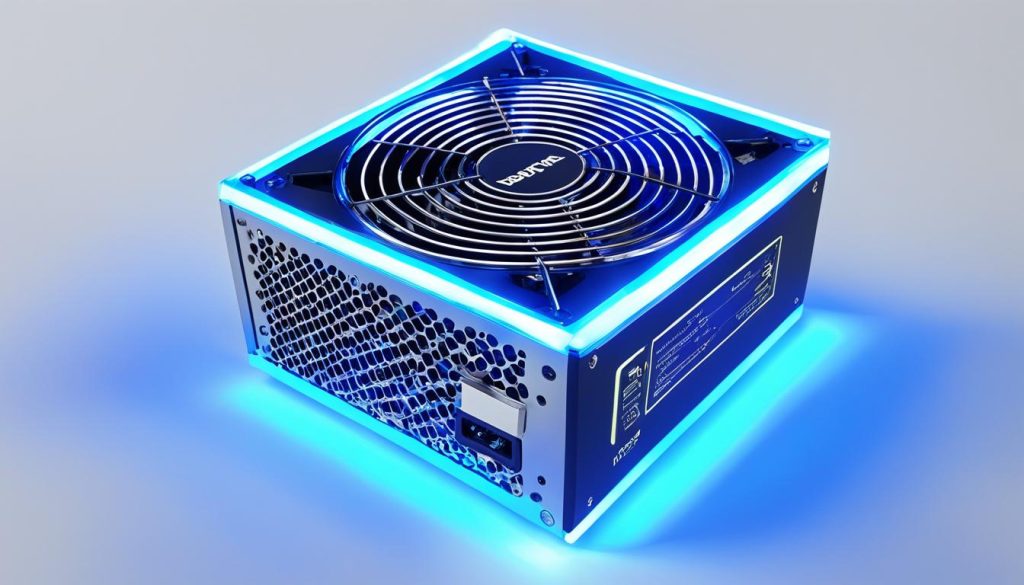
Using Electrical Appliances Safely
Electricity is a powerful and essential source of energy used in households, offices and industrial environments. However, electrical appliances can pose hazards if not used correctly, causing accidents, fires or even fatalities. To prevent these incidents, it is important to observe electrical safety practices, particularly for individuals living in homes with small children, pets or elderly people.
One of the safest ways to ensure that electrical appliances are used correctly is to read and follow the instructions that come with each appliance. The manufacturer’s guidelines provide crucial information on the safe operation and maintenance of electrical appliances. For instance, when using an electric kettle, it is important to ensure that the appliance’s element is always covered with water, and that the kettle is not left on unnecessarily.
To reduce the risk of electrical shock, avoid using electrical appliances near water or in damp areas. Electrical appliances should not be operated with wet hands, and cords, plugs and outlets should be dry before use.
Electrical cords, particularly extension cords, are also common causes of household fires and accidents. It is important to use the correct type of cord for each appliance and to replace cords that are damaged or frayed. Cords should not be twisted, pinched or walked on. They should also be kept away from heat sources and sharp objects.
Power strips are a common household electrical accessory,, and using them safely is essential to avoid electrical hazards. One tip is to use only power strips equipped with circuit breakers that shut off the electricity when an overload occurs. Tangled cords and exposed wires can also cause hazards, and one way to avoid this is to use velcro straps to keep cables tidy and organized.
In summary, ensuring electrical safety while using electrical appliances is important to prevent accidents, fires and fatalities. By observing safe practices such as reading and following manufacturers’ instructions, using electrical cords and power strips correctly, and avoiding hazardous areas, individuals can minimize the risks associated with using electrical appliances.
Quick Tips:
- Read and follow the manufacturer’s safety instructions for each appliance.
- Avoid using electrical appliances near water or in damp areas.
- Use extension cords that are the correct type and are not damaged or frayed.
- Use velcro straps to keep cables tidy and organized to avoid tangling and exposed wires.
- Use power strips equipped with circuit breakers that shut off the electricity when an overload occurs.
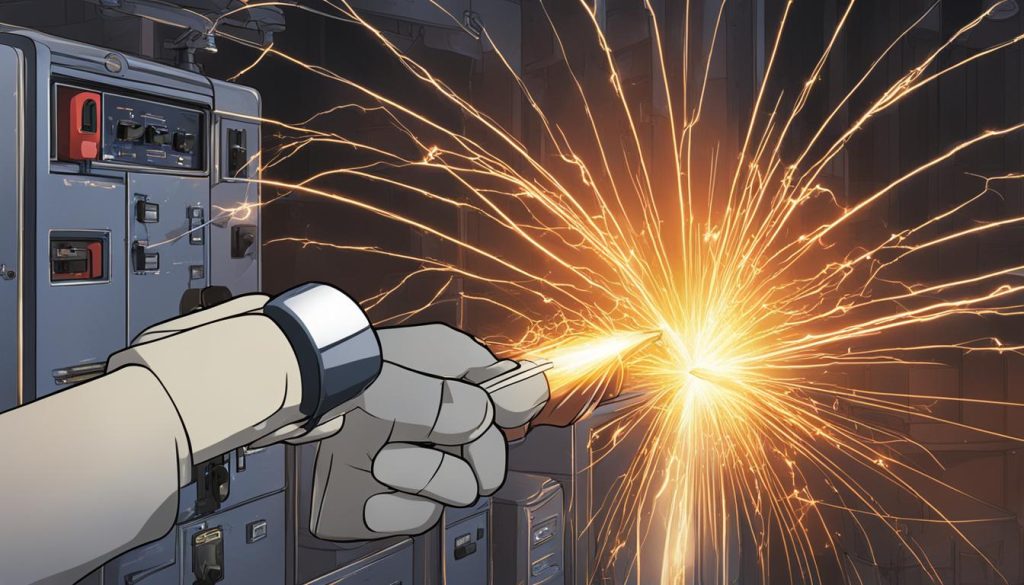
Renewable Energy and Sustainable Consumption
As our society becomes more conscious of the environmental impact of their everyday choices, a transition to renewable energy sources has become increasingly important. Renewable energy is derived from natural resources, such as solar, wind, and hydroelectric power. Unlike fossil fuels, these resources are constantly being replenished, making them a sustainable option for future generations.
In addition to embracing renewable energy, sustainable consumption practices are essential for minimizing our reliance on fossil fuel-based electricity. This includes strategies such as reducing energy consumption by turning off lights and electronics when not in use, using energy-efficient appliances, and implementing insulation and weatherization techniques at home.
To better understand the benefits of renewable energy and sustainable consumption, the table below highlights the advantages they offer:
The Advantages of Renewable Energy and Sustainable Consumption
| Benefits | Renewable Energy | Sustainable Consumption |
|---|---|---|
| Reduced greenhouse gas emissions | Generated from natural resources, with little to no emissions produced | Reduced energy consumption leads to less energy being produced by fossil fuels |
| Lower electricity bills | No fuel costs required for renewable energy | Energy-efficient appliances and conscious consumption practices lead to lower utility bills |
| Protection of natural resources | Renewable energy sources are constantly replenished | Conserving resources such as water and materials through sustainable consumption practices |
By embracing renewable energy and sustainable consumption practices, individuals can not only contribute to a greener future but also save money on electricity bills and protect natural resources.
Tips for Maximizing Energy Efficiency
Maximizing energy efficiency is an essential part of reducing energy consumption and electricity bills. Here are some practical tips and strategies:
Upgrade to Energy-Efficient Appliances
Investing in energy-efficient appliances can save electricity and reduce energy bills. When buying new appliances, look for appliances with the ENERGY STAR® label, indicating the highest level of energy efficiency.
Turn Off Appliances and Electronics When Not in Use
Appliances and electronics consume electricity even when they are not being used. Turn off appliances and electronics when not in use or unplug them to minimize energy consumption.
Adjust Thermostat Settings
Adjusting thermostat settings can save significant amounts of energy and reduce electricity bills. Increasing the thermostat temperature by a degree or two in summer or decreasing it by the same amount during winter is a simple way to save energy.
Switch to LED Lighting
LED lighting uses less energy, lasts longer, and produces less heat than traditional incandescent bulbs. Switching to LED lighting is an effective way to save electricity and reduce energy bills.
Optimize Airflow and Ventilation
Proper airflow and ventilation throughout the house can minimize the need for air conditioning and heating, resulting in energy savings. Ensure that air vents and filters are clean to ensure maximum airflow and ventilation.
Incorporating these tips and strategies into daily life can minimize energy consumption, reduce electricity bills, and contribute to a greener environment.
Conclusion
Understanding and striving for efficient electricity usage has become more crucial than ever before. By implementing the tips and knowledge provided in this article, individuals can make a positive impact on the environment and their personal finances. Embracing renewable energy sources and adopting sustainable consumption practices can contribute to a greener, more energy-efficient future.
It is important to remember that even small changes in daily habits can significantly reduce energy consumption and costs. From turning off lights when leaving a room to upgrading to energy-efficient appliances, every step counts towards creating a more sustainable future.
Overall, through a combination of education, awareness, and action, it is possible to create a better tomorrow for ourselves and for generations to come.
FAQ
What is electricity?
Electricity is a form of energy that results from the flow of electric charge. It is produced by various sources such as power plants and renewable energy sources, and it powers a wide range of devices and appliances in our daily lives.
How is electricity generated?
Electricity can be generated through various methods, including burning fossil fuels, such as coal or natural gas, in power plants to produce steam that drives turbines. It can also be generated through renewable sources like solar panels or wind turbines, harnessing the natural energy from the sun or wind.
What is a power supply?
A power supply is a device that provides electrical energy to an electrical circuit. It converts the electricity from the source, whether it’s a power grid or a battery, to a form that can be used by electrical appliances and devices.
How does an electrical circuit work?
An electrical circuit is a path that allows electric current to flow. It consists of a power source, such as a battery or power outlet, conductive wiring, and electrical components. When the circuit is closed or complete, the electric current flows through the circuit, powering devices or appliances that are connected.
How can I use electrical appliances safely?
To use electrical appliances safely, it is important to follow these guidelines: never overload electrical outlets or extension cords, keep appliances away from water, unplug appliances when not in use, regularly inspect cords for damage, and use ground fault circuit interrupters (GFCIs) in areas prone to moisture.
What is renewable energy?
Renewable energy refers to energy sources that are continually replenished and have a minimal impact on the environment. Examples include solar energy, wind power, hydropower, and geothermal energy. These sources are sustainable and can be harnessed without depleting natural resources.
How can I maximize energy efficiency?
To maximize energy efficiency, consider these tips: use LED light bulbs, turn off lights and appliances when not in use, adjust thermostat settings to conserve energy, insulate windows and doors, upgrade to energy-efficient appliances, and promote natural lighting and ventilation in your home or workplace.

